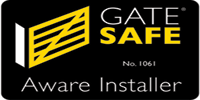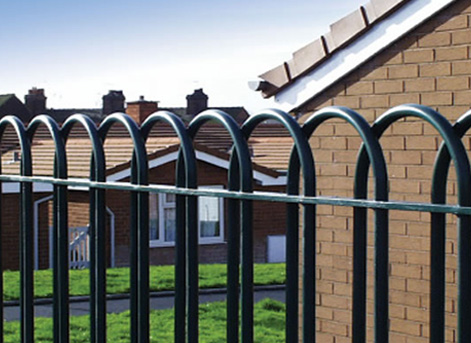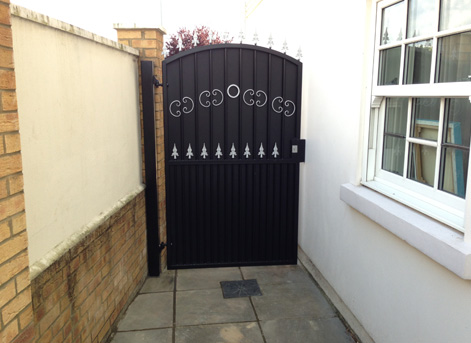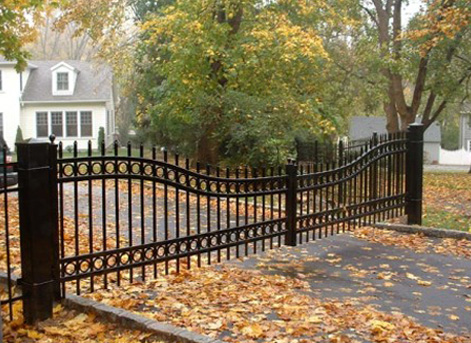Iron Gate Repairs
We repair wrought iron gates and cast iron gates for your convenience.
At London gates and grilles we provide Iron gate repairs to any form or type of wrought iron with our various specialized welding techniques.
Although Iron gate repairs is performed in a number of ways, in this commercial context we are concerned with the various types of electric arc and gas flame welding. These methods are simpler and less expensive than plasma, laser, ultra sound, forge, or pressure welding. For commercial and residential applications oxy-acetylene welding, shielded and non-shielded arc welding, MIG and TIG welding are sufficient to fabricate or repair common applications in Iron gate repairs.
Below is a detailed description of our Iron gate repairs using welding technique for wrought or cast iron gates:
Oxy-acetylene welding
Oxy-acetylene welding combines oxygen and a fuel (acetylene) to produce an extremely hot flame that melts metal. A filler material is usually added to supply material for filling space between the materials to be joined. Oxy-acetylene torches are also used for metal cutting. The hot flame cuts metal by melting a kerf through the material. Waste material flows away as oxide slag.
Non-shielded arc welding
Non-shielded arc welding requires a strong electrical source at high current. Thicker materials demand higher current. The welder must melt the two pieces to be joined, forming and maintaining a constant-sized plasma pool as the weld advances. Advanced skill is required to produce a clean, even weld.
Shielded arc welding
Shielded arc welding is also commonly known as stick welding. The stick, or welding rod, can be made of any number of alloys and is usually coated with a flux material that, as it is consumed in the heat, forms a protective gaseous shield around the weld that allows the operator to work without the need for exact control, speed and electrical current.
MIG Welding (metal inert gas welding)
MIG Welding (metal inert gas welding) uses a consumable wire that is automatically or semi-automatically fed through a welding gun along with an inert gas to shield the weld from splash-producing ambient atmosphere oxygen and other active gas traces. This process can produce a clean, even weld that is strong and unimpaired by bubbles or impure slag. MIG is the most commonly used welding method in commercial applications.
TIG Welding
TIG Welding is especially suited for lightweight stainless steel, aluminum, magnesium, and copper alloys. It employs a non-consumable tungsten electrode and an inert shielding gas, usually argon, to produce a finely controlled weld. The advantage of fine control is balanced by the disadvantage of being much slower than other types of welding. A filler metal is usually added although some TIG welds can be made autogenously with no filler.
Our representatives are skilled in making the right choice of Iron Gate repairs to meet your individual requirements. If you’re not sure which choice is best for you contact us and arrange a site visit today!













